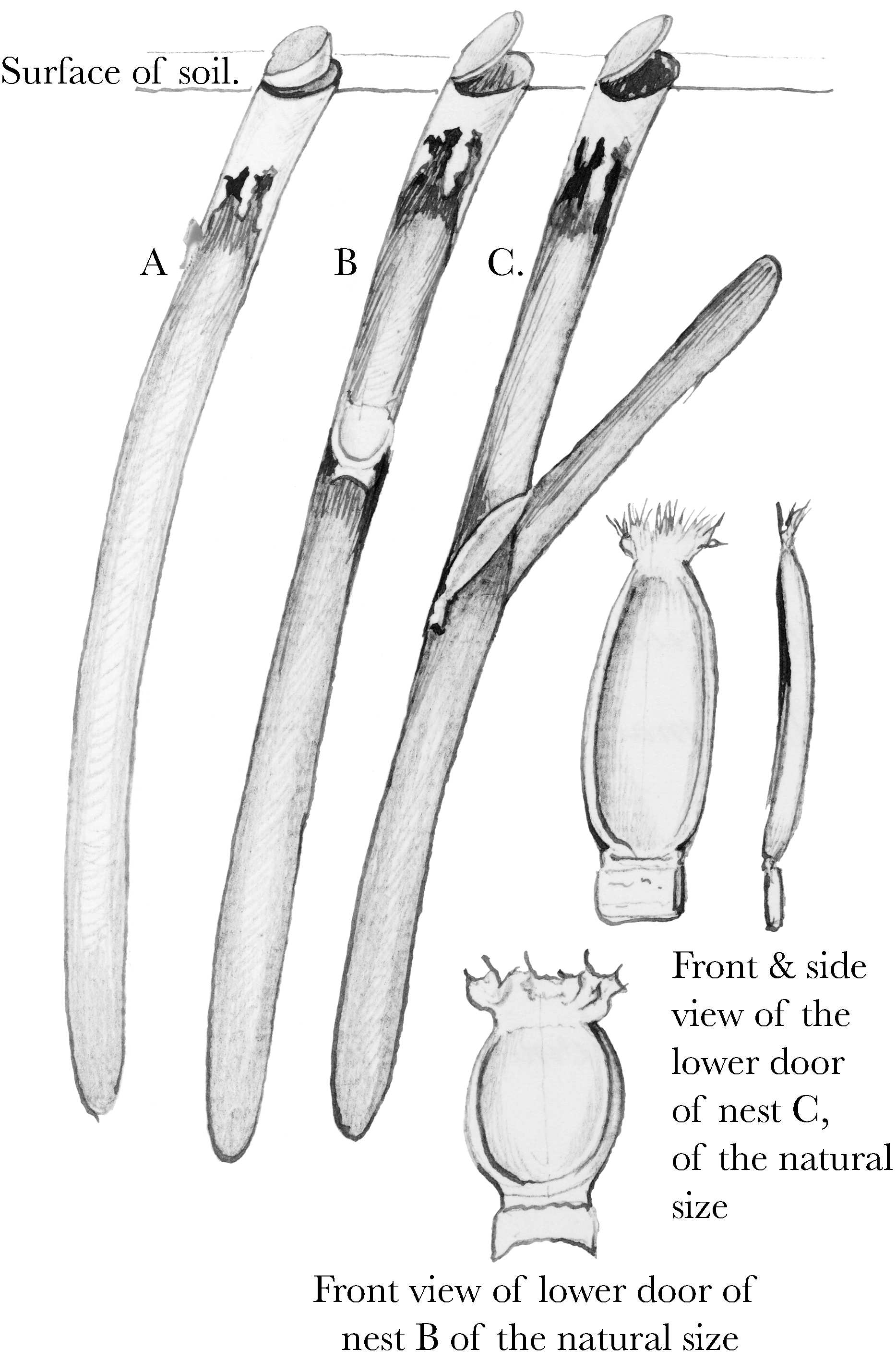From J. T. Moggridge 6 October 1872
2 Montague Villas | Richmond | (Surrey)
6 Oct. | 1872
My dear Sir
I am now on the point of leaving England for Mentone (we start on Wednesday next), & I am anxious before going to ask your permission to be allowed to send you a copy of a little book, which I have been engaged during the past summer in preparing, on the Habits & dwellings of the Harvesting Ants & Trap-door spiders of the Riviera.1
You were so good as to express some interest in my observations, reported to you in a letter last year, on these seed-carrying ants, which are, contrary to the general belief of naturalists, common objects in the south—2 If you will accept this little publication you will see that I have been able to collect several details as to the manner in which these creatures cut, carry & store their harvest, their manner of life & relations to other ants.
The true harvesting ants are, as far as I have yet seen, easily known by their habits; but there are other species of ant which, though clearly dependent in the main upon sweet secretions & animal matter for their living, do occasionally collect a few seeds & thus shew a trace of this instinct.
The great majority of species in the neighbourhood of Cannes & Mentone are not collectors of seed, &, indeed, there are but three species to which the name of harvester can properly apply—
These three species are however very common, & two of them may frequently be seen by the road side or crossing the paths in long lines, & are very familiar objects.—3
The trap-door spiders have been forced upon my attention by my attention by a friend, & I am now most deeply interested in their structure & habits—4
Up to the present time only one type of nest has been described in Europe, namely that in which the cylindrical silk-lined tube is closed by a solid door composed of layers of earth & silk & which fits into the aperture of the tube much as a cork does into the neck of a bottle (Fig. A).
To this type I am now able to add two others, & these posess two doors, one at the surface of the ground & one some inches below (Figs. B & C.).

In these nests the surface door is always thin & wafer-like & merely serves to conceal the aperture of the tube upon which it is laid, while the lower door is solid & capable of offering mechanical resistance.
I will not however trouble you with further details, as I hope to explain these fully in the book which should appear in the end of next month.—
I have drawn the plates & nearly completed the MS., but am anxious to make a few additional observations at Mentone before going to print.
I am indebted to Mr. Pickard Cambridge for the names & descriptions of the four species of Trap-door spider found on the Riviera, & Prof. Ausserer has also been so good as to give his opinion as to their proper naming.—5 I greatly regret however that I have hitherto been unable to discover the males of any one of these spiders & it would seem that they are either very scarce or exceptionally well concealed—6
This letter need not require an answer; at least if I do not receive one I shall take it for granted that I may send my book— | Believe me | Yrs. very sincerely | J. Traherne Moggridge.
Footnotes
Bibliography
Correspondence: The correspondence of Charles Darwin. Edited by Frederick Burkhardt et al. 29 vols to date. Cambridge: Cambridge University Press. 1985–.
Desmond, Ray. 1994. Dictionary of British and Irish botanists and horticulturists including plant collectors, flower painters and garden designers. New edition, revised with the assistance of Christine Ellwood. London: Taylor & Francis and the Natural History Museum. Bristol, Pa.: Taylor & Francis.
Marginalia: Charles Darwin’s marginalia. Edited by Mario A. Di Gregorio with the assistance of Nicholas W. Gill. Vol. 1. New York and London: Garland Publishing. 1990.
Moggridge, John Traherne. 1873. Harvesting ants and trap-door spiders: notes and observations on their habits and dwellings. London: L. Reeve & Co.
Summary
He will send his book [Harvesting ants and trap-door spiders (1873)]. Describes two new types of trap-door spider nests.
Letter details
- Letter no.
- DCP-LETT-8546
- From
- John Traherne Moggridge
- To
- Charles Robert Darwin
- Sent from
- Richmond
- Source of text
- DAR 171: 216
- Physical description
- ALS 4pp
Please cite as
Darwin Correspondence Project, “Letter no. 8546,” accessed on 19 April 2024, https://www.darwinproject.ac.uk/letter/?docId=letters/DCP-LETT-8546.xml
Also published in The Correspondence of Charles Darwin, vol. 20


